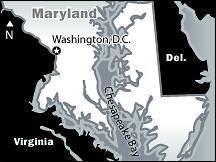 |
 |
|
|||||||
Some of the answers were lost with the 19 terrorists who died in the four jets that crashed that fateful Tuesday morning. Some may emerge from the suspected "20th hijacker" who is in custody but has revealed little. There is, however, another man, a man not directly involved in the 9-11 attacks but whose story provides rich background, context and understanding for the events of that day and the jihad warriors who instigated them. A man named Ahmed Ressam. Over the next two weeks, The Seattle Times will tell that story. The tale of how a footloose, unfocused Algerian boy, son of a war hero, evolved into a terrorist. How he crossed international borders with impunity, even as he left a trail of crimes. How he learned to kill in Osama bin Laden’s al-Qaida camps. How he planned to use those lessons against Americans on the eve of the new millennium, 20 months before the attacks on the World Trade Center and the Pentagon. How he nearly got away with it. And how, since Sept. 11, he has been one of the U.S. government’s best resources in the war on terror.
In another context — sisters getting married in a double service — this would be an occasion for joy. In fact, though, this was chilling news, a coded communiqué intercepted in an overseas telephone call. It was news that had the most powerful people of the most powerful nation gathered, grim-faced, in the windowless Situation Room in the basement of the White House. Among those seated around the massive wooden table Dec. 8, 1999, were Secretary of State Madeleine Albright, Attorney General Janet Reno, National Security Advisor Samuel Berger, FBI Director Louis Freeh, CIA Director George Tenet, Richard Clarke of the National Security Council and Michael Sheehan, chief of counterterrorism for the State Department. Tenet had the floor: For months, the Central Intelligence Agency had been picking up sketchy reports about possible terrorist acts planned for the dawn of the millennium. Now, friendly foreign intelligence agencies were pursuing tips of terrifying inevitability. There may be as many as 15 attacks against Americans in the works, Tenet explained. The CIA didn't know where, though U.S. facilities abroad were likely targets. They didn't know exactly when, though analysts suspected it would be during New Year's Eve celebrations. What they did know was who: al-Qaida, the Islamic extremist group headed by Saudi millionaire Osama bin Laden. Bin Laden's terrorists had been behind the 1998 suicide bombings of U.S. embassies in Kenya and Tanzania. Since those attacks, President Clinton, in a top-secret order, had authorized the CIA to assassinate bin Laden, thereby crippling al-Qaida. But bin Laden and his network had been elusive prey. And the latest intelligence reports confirmed that the terrorists were doing more than hiding. They were plotting. Jordanian security agents had intercepted a telephone call between an al-Qaida leader and a suspected Jordanian terrorist. In the call, Abu Zubaydah, the No. 3 man in al-Qaida, said cryptically, "The grooms are ready for the big wedding" — a signal that plans were in motion. So the White House drafted plans of its own. Clarke, Clinton's point man on terrorism, outlined them for the others: First, the administration would persuade friendly governments to sweep up suspected terrorists and arrest, search, deport or simply harass them — anything to disrupt the New Year's Eve attacks. Meanwhile, the State Department's Sheehan would contact the Taliban, the radical Islamic ruling party in Afghanistan, and demand that it turn over bin Laden for prosecution in the embassy bombings. The members of the national-security cadre signed off on the plan. FBI agents helped the Jordanians interrogate 13 suspected terrorists who had been arrested earlier. In one of the suspect's homes, agents found a computer with plans for making bombs and details on terrorist camps in Afghanistan. They also found a drawing of a building flying a flag — possibly, agents thought, a U.S. embassy.
Some of the arrested men talked. The "grooms," as suspected, were Middle Eastern terrorists who had trained at bin Laden's camps. The "wedding" was their scheme to use a powerful truck bomb to destroy the Radisson SAS Hotel in Amman, Jordan, which would be thronged with New Year's visitors. Other plans included using machine guns to mow down American sightseers at such tourist sites as the Temple of Hercules in Amman.
On Dec. 12, Secretary of State Albright assured CBS' "Face the Nation" viewers that the warnings didn't mean Americans should stay home. "We are suggesting that if they do travel abroad, that they be in touch with the American embassy and the consulate and take care." Two days later, a State Department spokesman offered further assurance: "The information that we're sharing with the American public, the specific information that we have, is related to threats overseas and not to U.S. soil." Within hours, a 32-year-old Algerian by the name of Ahmed Ressam was checking out of a roadside motel outside Vancouver, B.C. It was the beginning of Ramadan, the holiest month of the Islamic calendar, a time for believers to demonstrate their devotion to Allah and to the legacy of the prophet Muhammad. For Ahmed Ressam and other members of the worldwide al-Qaida network, that demonstration took a radical form.
Ressam walked out to his rented, green, 1999 Chrysler 300M sedan. He delicately loaded its trunk with 130 pounds of bomb components. And he headed for Seattle.
|
|
|||||||||||||||||||||||||||||||||||||||||||||||||||||||||||||||||||||||||||||||||||||||||
|
The Terrorist Within | Reprints seattletimes.com home |





